Gondi Family
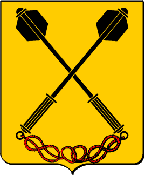
Vincent de Paul and the Gondi Family
In 1625 in Paris, as a result of a request from Madame de Gondi (Françoise Marguérite de Silly) to Vincent de Paul, the Congregation of the Mission was formally set up to give missions to the neglected people of the French countryside. Vincent de Paul had previously been tutor to Philippe-Emmanuel and Françoise Marguérite de Gondi's children, and the family was involved in Vincent's life both before and after 1625. It was prior to and during Vincent de Paul's lifetime that the Gondi were at the peak of their influence and power in France. Below are some details of the Gondi Family.
Gondi Arms
The Gondi Arms are shown on the top right of this page. The Heraldic French "Descriptif" of the Arms might be translated as: "On a background of gold two battle maces, black in colour, saltire (set in the form of a St. Andrew's Cross) and tied with red." The battle maces are a reminder of the warrior ancestry of the Gondi. The family motto was "non sine labore" which may be translated from Latin as "not without effort".
Gondi Origins
Evidence of the existence of the Gondi family can be found in the twelfth and thirteenth centuries in Florence, Italy. The Gondi family were merchant bankers and prominent financial partners of the Medici. Unlike the Medici, who were probably originally poor coal merchants, the Gondi were of the old florentine nobility, tracing their line traditionally back to the legendary florentine warrior Braccio Filippi said to have been enobled (knighted?) by Charlemagne himself. With Orlando Bellicozzo, a member of the Great Council of Florence in 1197, the Gondi emerge into history, receiving their patronymic from a certain Gondo Gondi, sitting on the Great Council of Florence in 1251, and being signatory to a treaty between Florence and Genoa in that year. In the fourteenth century several members of the family sat on the Great Council. In 1351, Simone de Gieri Gondi loaned the Republic 8000 golden florins in a time of extremity. He renounced, for himself and his house, the Ghibellines, a faction which supported the Holy Roman Empire.
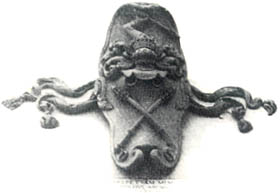
Simone de Gieri Gondi held extensive lands around Valcava, in the Mugello Valley in Tuscany, 35 km north of Florence, where the church of S. Cresci, and a chapel which belonged to the Gondi (S. Margherita, formerly S. Martino) bore the Gondi arms. Simone de Gieri had seven children, one of whom was Silvestro Gondi whose son Simone de Silvestro Gondi was the first of the Gondi to be the Grand Prior of the Republic of Florence. He held this position on three occasions. His daughter Maddalena, who married Giovanni Salviati, became the great grandmother of Cosimo I de' Medici; thence were descended all the Catholic crowned heads of pre-Napoleonic Europe. When the Medici came to be Grand Dukes of Tuscany, the Gondi received empty but honorary titles of Senators.
By the fifteenth century, the Gondi Family participated interrnationally in the import-export business, along with finance and banking, and they had connections not only in Florence but also in Naples, Lisbon, Seville, Warsaw, Lyons and Constantinople.
Gondi Genealogy
In the Selective Genealogy Table below (focus on the Gondi in France, revised on May 18, 2019), numbers in brackets after some names refer to the notes following the Table. The symbol "=" denotes marriage.
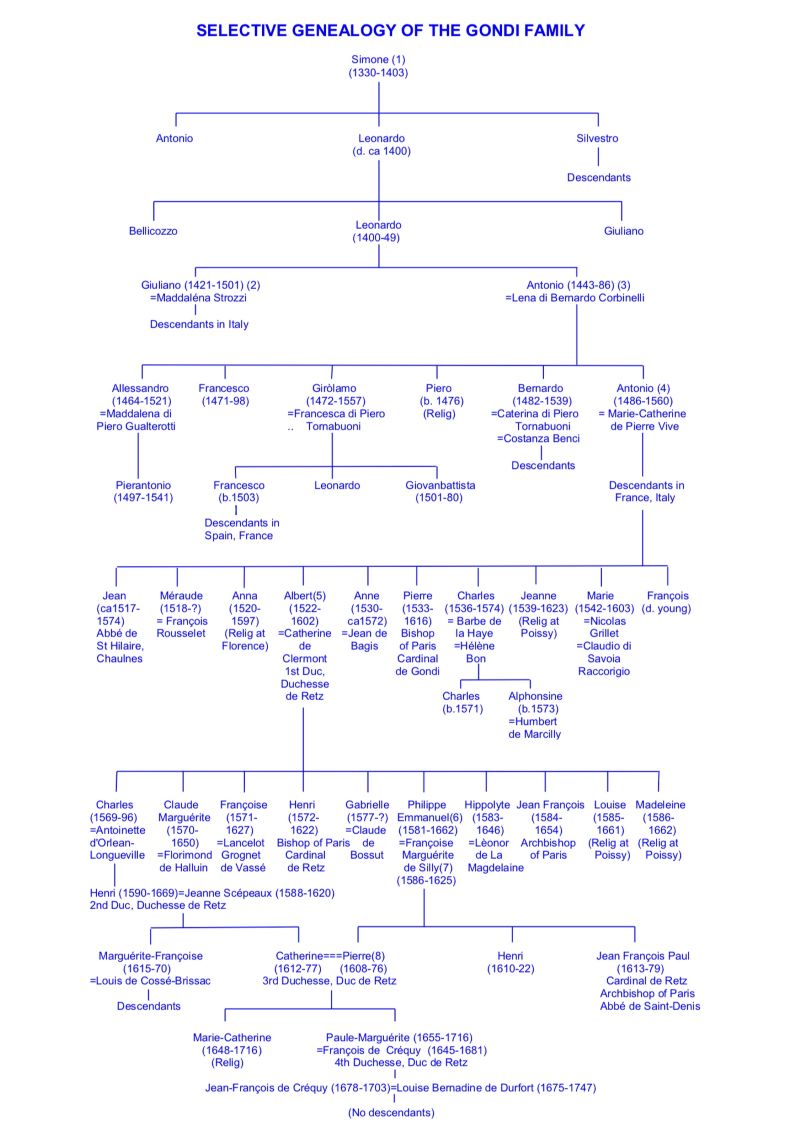
(1) Simone de Gieri Gondi (d.1403): In 1358, he was disqualified from public office in Florence - along with his descendants up to the third generation - for his Ghibelline sympathies (which he later renounced). Despite this, by his death in 1403, he was recognized as one of the wealthiest citizens in the city of Florence. He owned sizeable properties, and the tower in Florence mentioned below in Memories of the Gondi Family. However, his descendants did not all follow him in his success - their fortunes in Italy waxed and waned with individuals.
(2) Giuliano de Gondi (1421-1501): Left monuments to the family in Florence to honour himself and his family. Two of these are the Gondi Chapel (Capella Gondi) in the Church of Santa Maria Novella (near the Stazione Firenze SMN), and the Palazzo Gondi (see below).
(3) Antonio de Gondi (1443-1486): Antonio was the brother of Giuliano (Note (2)) and a merchant in business with the same Giuliano. After Antonio died, and all his sons were of majority age, his property was eventually divided between his four sons (one son, Francesco had died, and another, Piero, had become a Dominican Monk). The youngest son, known as Guidobaldo Antonio, was sent to look after the family's business affairs in Lyons, France.
(4) Guildobaldo Antonio de Gondi (known as Antonio II and also as Antoine) (1486-1560): Son of Antonio de Gondi (Note (3)), he was sent to Lyons, France, in 1506 to look after the family's business affairs there. He remained in France, married a noblewoman in 1516 (Marie Catherine de Pierrevive), and with his wife acquired the seignory of Le Perron near Lyons in 1521. He became a banker, a property owner in Lyons, was active in political affairs, and was eventually employed by both the church and the crown as a financial agent. Some time after 1533, when Catherine de Medici had passed through the city of Lyons followng her recent marriage to Henry of Valois (Duke of Orleans), she took Marie Catherine into her sevice as a lady-in-wainting and later appointed her Governess of the Royal Children. Antoine was employed as maitre d'hotel for Catherine de Medici's husband Henry, by that time the Dauphin of France. Antoine retained this position when Henry became King of France (Henry II), with Catherine as Queen. Marie Catherine later was put in charge of Catherine de Medici's finances and building projects. Henry II and Catherine de Medici were the parents of Marguérite de Valois who later figured in Vincent de Paul's life when he first came to Paris. Antoine died in 1560 in Paris, a nobleman and a courtier. The children of Antonio de Gondi and Marie Catherine de Pierrevive remained in France, except for Anna who became a religious at Florence. One son became the Abbé of St Hilaire (Jean), another the Duke of Retz (Albert), and another the Bishop of Paris and Cardinal de Gondi (Pierre). A daughter became the Prioress of the Dominican Royal Priory of St Louis in Poissy (Jeanne). The descendants of Guidobaldo Antonio de Gondi and Marie Catherine de Pierrevive are generally referred to as the "Retz Branch" of the Gondi in France.
(5) Albert de Gondi (1522-1602), son of Antoine (Note (4)), married Claude Catherine de Clermont, the Baroness of Retz, and he himself gained the title of Baron of Retz. Retz, or Rais as it is also known, is the southern part of Brittany - west of Nantes and south of the River Loire estuary. Both Albert and his brother Charles became advisers of Queen Catherine de Medici. With the assistance of Catherine de Medici, Albert managed to have the Barony of Retz elevated to a Duchy, so that he and his wife became the first Duke and Duchess of Retz. Albert and Claude Catherine de Clermont had ten children - Charles, Claude Marguérite, Françoise, Gabrielle, Hippolyte, Henri, Louise, Madeleine, Philippe-Emmanuel (General of the Galleys), and Jean-François. Albert's son Henri was Bishop of Paris and the first Cardinal de Retz. Another son, Jean-François, was the first Archbishop of Paris. The eldest daughter Claude Marguérite (Marquise de Maignelay, aka "Charlotte Marguérite" or just "Marguérite" ) was known for her piety, work and contributions to the poor, and also for supporting the ministries of Vincent de Paul, including the provision of significant amounts of finance to assist with expenses incurred in holding clergy retreats at St Lazare.
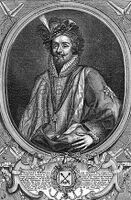
(6) Philippe-Emmanuel de Gondi (1581-1662): Son of Albert de Gondi (Note (5)), married Françoise Marguérite de Silly (Note(7)), and they had three children Pierre, Henri, and Jean-François Paul. Philippe-Emmanuel was Comte de Joigny, Marquis de Belle-Isle, Baron de Montmireil, Seigneur de Dampierre, Seigneur de Villepreux and General of the Galleys of France. He joined The Oratory when his wife Marguérite died. His third son Jean-François Paul became Archbishop of Paris and the second (and notorious) Cardinal de Retz.
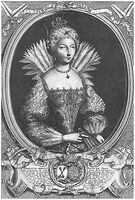
(7) Françoise Marguérite de Silly (1580-1625): Elder daughter of Antoine de Silly (Seigneur of Rochepot), and Marie Lannoy. By her father, Marguérite was Baroness of Montmirail, Damoiselle of Commercy and Sovereign of Euville (Lorraine, Meuse). By her mother, Marie de Lannoy, Marguérite was Dame de Folleville, Paillart, Serevillers and Gannes. Marguérite had a younger sister Madeleine. It was as Madame de Gondi, wife of Philippe-Emmanuel de Gondi, that Marguérite asked Vincent de Paul to set up the group which became known as the Congregation of the Mission.
(8) Pierre de Gondi and Catherine de Gondi were married in 1633. In 1634, Catherine’s father, Henri, transferred the title of Duc and Duchesse de Retz to the couple. The title thus continued in the family name and was passed on to their daughter, Paule Marguérite Françoise de Gondi who held the title of Duchess de Retz from 1676-1716. In 1675, she had married François Emmanuel de Blanchefort-Créquy (1645-1681), who became the next Duke of Retz. Their one child, Jean François, who was in the military, died at Modena in Italy in 1703 at the age of twenty-five. He and his wife Louise Bernadine de Durfort had no children. Both Jean François and his father pre-deceased Paule Marguérite. At her death in 1716, the Retz title passed to Nicolas VI de Neufville-Villeroy, a great grandson of Henri de Gondi (the son of Charles de Gondi and grandson of Albert de Gondi). In 1778, the Duchy of Retz was sold out of the Neufville-Villeroy family to the House of Brie-Serrant, the members of which were not related to the House of de Gondi. Between 1780 and 1782, Alexandre de Brie-Serrant had the Duchy of Retz broken up into a number of fiefs and sold, keeping for himself the title of Baron of Retz. In 1790, at the time of the French Revolution, Alexandre de Brie-Serrant was dispossessed of his property, and it was absorbed into a new Département, Loire-Inférieure. In 1957, this Département became known as Loire-Atlantique. The Pays de Retz thus became a cultural and historical memory.
The name “Retz” was also taken by Henri de Gondi, the first Cardinal de Retz, son of Albert and Claude Catherine, as well as by Jean Paul François de Gondi, second (and notorious) Cardinal de Retz and son of Philippe Emmanuel de Gondi and Marguérite de Silly.
Retz and Codun Branches of the Gondi in France
The descendants of Guidobaldo Antonio Gondi (cf Genealogy Note (4) above) are sometimes known as the "Retz" branch of the Gondi. The title of "Retz" came into the family when Albert de Gondi married Catherine of Clermont (cf Genealogy Note (5) above). Another branch of the Gondi family which became known as the "Codun" branch (named after a title this branch later acquired) was headed by the sons of Giròlamo Gondi, brother of Guidobaldo Antonio Gondi (Genealogy Note (4) above). The descendants of Giròlamo Gondi settled in Lyons some years after Guidobaldo Antonio Gondi. Giròlamo's son Giovanbattista (1501-1580) was a successful business man in Lyon and later moved to Paris where he became a wealthy and important financier. He was naturalised French and became known as Jean-Baptiste de Gondi . He was close to Catherine de Medici and was her maitre d'hotel . Jean Baptiste's main heir was his nephew who was known as Jérôme de Gondi (1550-1604), the son of Jean Baptiste's brother Francesco who had settled in Valencia and was the Tuscan ambassador to Spain. Jérôme, Francesco's son, was born in Valencia, but later moved to Lyon and became a banker. Eventually he took up residence in Paris where he established a reputation in diplomatic and financial area. This Jérôme de Gondi (1550–1604) was made a Chevalier d’honneur of Marie de Medicis, and became the first Introducteur des ambassadeurs (forerunner of the Chef du Protocole de la République), and Baron de Codun (the title from which this branch of the family was named). He was also ambassador of Rome. Jérôme’s son, Jean-Baptiste de Gondi (1576-1639), was also Baron de Codun, gentilhomme ordinaire de la chambre of the king, and, maître d'hôtel of the Queen-Mother Catherine de Médicis. The son of Jean-Baptiste, Jérôme de Gondi (1605-1686), was Baron de Codun and Capitaine de Chevaux légers. His son, Pierre-Ferdinand de Gondi (1658-1699), was Compte de Vic.
Gondi Family Success in France
The Gondi Family were noted for their relatively speedy rise to power and acquisition of wealth in France in the sixteenth century. Their success was evident from their positions at the French Royal Court, their influence in matters of State and Church, their financial and diplomatic interests, their ownership of land and other investments, their grand houses, their rise through the ranks of the nobility, and their contribution to the arts.
The success of the Gondi Family in France can be attributed to almost symbiotic relationships with Queen Catherine de Medici, Charles IX and to a lesser extent with Henri III. It can also be attributed to their willingness to adapt to different situations, their business acumen, their establishment of extensive financial and diplomatic networks, their own personalities and skills, family solidarity to the point of "kin patronage" and the arrangement of "good marriages", i.e., marriages that were to the advantage of the family name and position.
The Gondi were respected by many, and they had their circle of friends. But there were certainly those who did not regard them favourably. Their own personal resilience and family solidarity enabled them to deal with the criticism, ridicule and opposition they received on account of their Italian background, irritation as to their status in the nobility (they were often considered to be parvenus or upstarts), envy at their influence and relationships at the Royal Court, resentment of their business success and their financial and diplomatic connections in State and Church. They were even judged by some to be Machiavellian in their way of acting, and their possible involvement in some aspects of the St Bartholomew's Day Massacre of 1572 was often exploited by their enemies.
Note that the information in this section ("Gondi Family Success in France") is largely drawn from Joanna Milstein's book published in 2014: The Gondi - Family Strategy and Survival in Early Modern France (cf. Further Resources list below). In this book, Joanna Milstein discusses the Gondi Family with particular reference to, among others, Antonio de Gondi and his wife Marie Catherine de Pierrevive, their son Albert de Gondi Duke of Retz and his wife Claude Catherine de Clermont Duchess of Retz, Charles de Gondi and Cardinal Pierre de Gondi (both brothers of Albert de Gondi), Jeanne de Gondi (Albert de Gondi's sister), as well as Jean-Baptiste de Gondi and his nephew Jérôme de Gondi (Cf "*Retz and Codun Branches of the Gondi Family" above) who were part of the extended family. However, this book is not a biographical description of various members of the Gondi Family, but as author Joanna Milstein writes (Introduction, p 2): ".... its intention is to reconstruct the network of office, obligation and patronage that eased the family's rise to eminence and helped bolster them against the inevitable jealousy and anger their spectacular success provoked. It addresses several key aspects of Gondi service and power: political, diplomatic, ecclesiastical and artistic."
Memories of the Gondi in France

Chateau des Gondi: The Chateau des Gondi (shown at right) at Folleville, Picardy, northern France, known now as the Chateau de Folleville, was built at the end of the fourteenth century. It was richly furnished by the Lannoy family (ancestors of Françoise-Marguérite de Silly. (Cf Genealogy Note 7, above). In the seventeenth century it passed to the Gondi family. It was in this Chateau that Vincent de Paul would have stayed when he came with Madame de Gondi (Marguérite de Silly) to visit her estates.
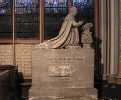
A memorial to Albert de Gondi (shown at left, and see Genealogy Note (5) above), Duc de Retz and Maréchal de France, can be found in the Chapel of Our Lady of the Seven Dolours in the Cathedral of Notre Dame in Paris. In 1568, Albert, then adviser of Queen Catherine de Medici, acquired the Seignory of Noisy just west of Paris and north west of Versailles. This Seignory included the village of Noisy and some surrounding land. In 1589, on the edge of the forest near Noisy, he built a Chateau. All that is left now is the entrance gateway, La Porte des Gondi, shown below right.


In 1575, Albert acquired the Seignory of Versailles adjacent to Noisy. Over the next few decades, the Gondi lands and property became places where french royalty stayed when engaging in hunting. A portion of the Seignory of Versailles was sold by Albert's heir Jean-François de Gondi, Archbishop of Paris, to Louis XIII who built a hunting lodge (pavillon de chasse) there in 1623-24. Sometime before1631 the hunting lodge was demolished and by 1634 Louis had it replaced with a Chateau. The Crown later obtained the rest of the Seignory of Versailles from the Gondi family. Louis XIV, son of Louis XIII, developed his father's Chateau into what is now the Chateau de Versailles (Palace of Versailles). In the time of Louis XIV, the village of Noisy became known as Noisy le Roi], and retains that name today. In 1959, Noisy le Roi chose the Arms of Albert de Gondi as its own Arms. These Arms, shown at left, are made up of the Gondi Arms (on a background of gold, two black battle maces saltire and tied with red) and the Family Arms of Catherine de Clermont, Albert's wife (on a background of red, two silver keys saltire).
The Gondi in Italy
In name at least, and perhaps in fact also, members of the Gondi family in France seem to have disappeared from sight by the time of the French Revolution in 1792. But this is not the case with the Gondi in Italy. Descendants of Giuliano Gondi (see note (2) above) are still alive and well in Tuscany ! For more information on some of the present members of the Gondi family in Italy, see the Marchesi Gondi website.
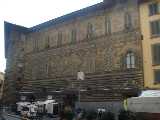
Palazzo Gondi (Florence, Italy): The Gondi family owned a tower in the Santa Maria Novella quarter of Florence Then, in the Via de'Gondi, Centro Storico, the construction of the Palazzo Gondi was begun in 1501 after a design by Giuliano di San Gallo, employed by Giuliano Gondi (cf Genealogy Note (2) above). The building was not completed till after the death of Giuliano Gondi, The cortile is surrounded by graceful columns supporting arches, but is most remarkable for the staircase, with its fine balustrade, and curious variety of delicate ornamentation in animals and foliage. At the head of the interior staircase, leading to the principal apartments, is the statue of a Roman senator, taken from the supposed Temple of Isis. A magnificent chimney-piece, the work of Giuliano di San Gallo, adorns the large entrance-hall, round which are hung a number of family portraits. In recent years the Palazzo Gondi has been extensively renovated and restored. The ownership of the Palazzo Gondi is currently in the hands of Bernardo Gondi and his family. Bernardo Gondi is a descendant of Giuliano Gondi and one of the Marchesi Gondi.
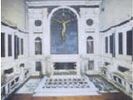
Capella Gondi (Florence, Italy): The Gondi Chapel in the Church of Santa Maria Novella (near the Firenze SMN Railway Station) is probably more visited to view the crucifix of Filippo Brunelleschi than to remember the Gondi Family. The Gondi Chapel is situated to the left of the high altar of the main church, and is dedicated to St Luke since the first stone of the new church of Santa Maria Novella was laid here on October 18, 1279, the feast day of St Luke. The walls of the Chapel were originally entirely covered with frescoes, but in 1503, when the Gondi family became patrons of the chapel, they had the decoration changed to white marble, porphyry mirrors, fine black marble columns and white marble seats. In the arch near the end wall is Brunelleschi's famous Crucifix.


The Arms of the House of Gondi are on the floor to the left of the Chapel altar (see picture at left). The tomb of Giuliano Gondi (cf Genealogy Note (2) above) is in this chapel. The Gondi Arms can also be seen in a window above the main altar of the Chapel (see picture at right). Giuliano (ancestor of the Marchesi Gondi) and his brother Antonio (cf Genealogy Note (3) above) were responsible for the Gondi becoming patrons of the Chapel.
FURTHER RESOURCES
BOOKS AND ARTICLES
Bonnault d'Houet, Baron Xavier de, Une grand chrétienne, Claude-Marguérite de Gondi , Marquise de Maignelay, Société Historique de Compiègne, France, 1924, article, pp 1-216. Text available for download in PDF in two sections through links: Part a pp 1-100 and Part b pp 101-216. May be slow to download. Accessed January 2019.
Corbinelli, Jean de, Histoire Généalogique de la maison de Gondi, Tome II, Jean-Baptiste Coignard: Paris, 1705. Text accessible through Google Books. Accessed February 2019.
Coste CM, Pierre, The Life and Works of St Vincent De Paul, Vol I, New City Press: New York, 1987
Floquet, Jacques, 1522 - 2022 500e Anniversaire de la Naissance d'Albert de Gondi, Le Mag, Magazine Municipal, Noisy-le-Roi, France, N-99 Mars à Mai, 2022, Dossier P.18 (pp18-21). Accessed April 17, 2023 at: Albert de Gondi
Goldthwaite, Richard A., Private Wealth in Renaissance Florence - a Study of Four Families, Princeton University Press, New Jersey, 1968, pp 156-186
Koch CM, Bernard, Généalogie: Gondi-Marillac, Etudes Vincentiennes No.182 , FamVin Francophone Site, accessed February 2019, individual texts on list are available on request.
Milstein, Joanna, The Gondi - Family Strategy and Survival in Early Modern France, Ashgate: Farnham, Surrey, England, and Burlington VT, USA, 2014
Román CM, J-M, St Vincent de Paul, a Biography, Melisende: London,1999
Rybolt CM, John E, and Diefendorf, Barbara B, Madame de Gondi: A Contemporary Seventeenth-Century Lfe, Vincentian Heritage, 21, No 1, (2000), 25-43. The text of this article can be downloaded through the link: Madame de Gondi, accessed March 2019.
Udovic CM, Edward R, Charlotte-Marguérite de Gondi, Marquise de Maignelay, St Vincent's Reading List XVI (recurring blog series), DePaul University Library, Chicago. Accessed January 2019
WEB LINKS
Claude Catherine de Clermont, Vincentian Encyclopedia, accessed September 2010
Famille de Gondi - Généalogie, Wikiwand, accessed September 2017
Françoise Marguérite de Silly, Vincentian Encyclopedia, accessed September 2010
Liste des seigneurs de Retz, Wikipedia (French), accessed April 2011
Marchesi Gondi, Famiglia e Tenute (Italian and English), accessed March 2017
Marie Catherine de Pierrevive, Vincentian Encyclopedia, accessed August 2010
